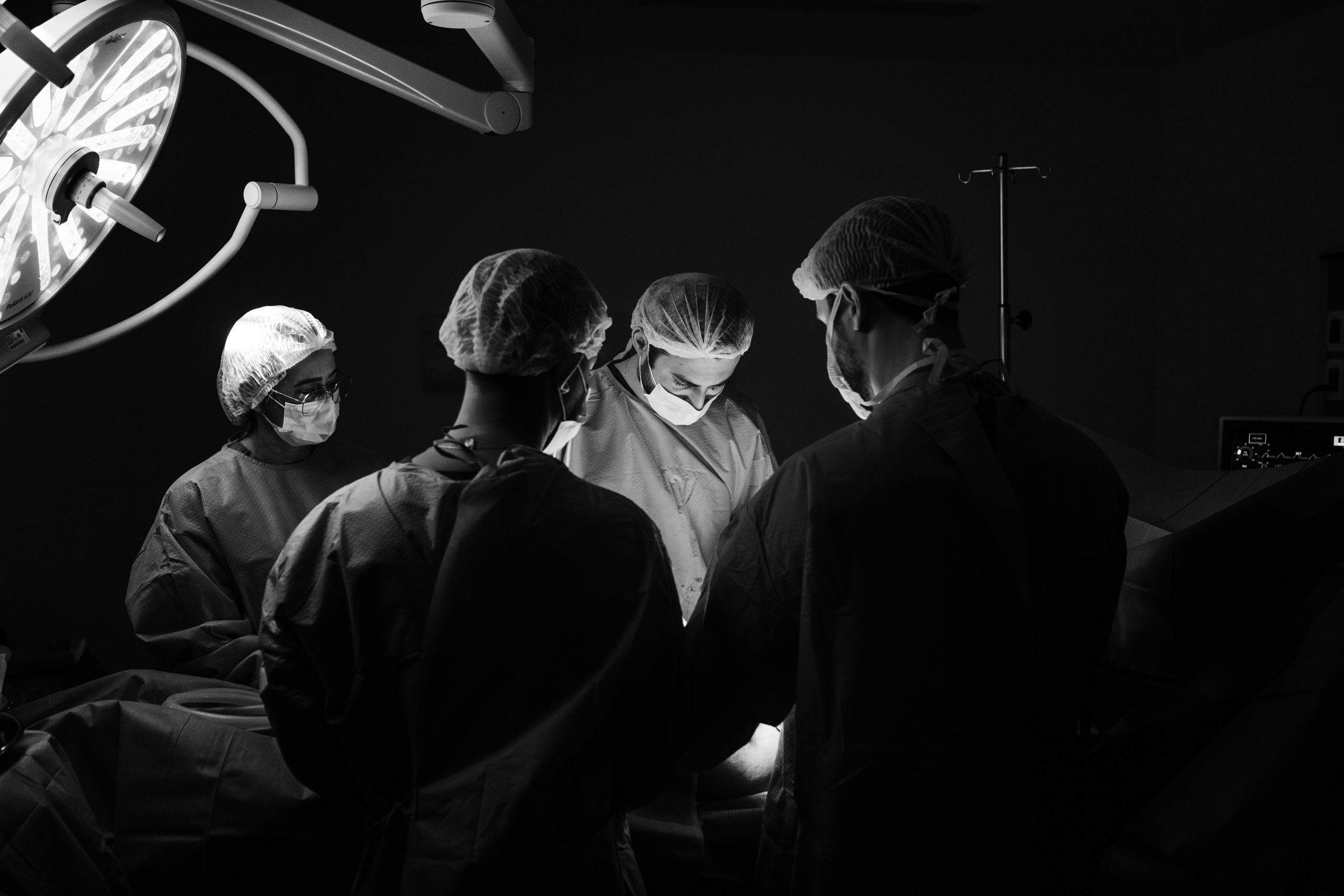Good surgery suite design can help improve a surgeon’s comfort level through better ergonomics; reduce team stress during a procedure, and, in some cases, improve a provider’s stamina to a degree that it allows them to accept more appointments. Otherwise, poor design can cause a suite to feel cramped, making it more difficult for the team to work with instruments and equipment.
In the 2021 publication, Animal Hospital Design Strategies for Better Care , the American Animal Hospital Association (AAHA) states that regardless of the scope of the project, design can improve five distinct areas of the practice, including team productivity and safety, patient care, and financial growth.1
There are two situations where practice owners can affect the design of their practice. The first is when they are building an entirely new building from the ground up. This gives them a completely blank slate to work with, a prospect that is as exciting as it is overwhelming. Alternately, a practice owner may want to renovate an older space. Offices with surgical suites that were built 30 or 40 years ago were not designed with the same equipment needs as today.
In either case, surgical suite design is a key component of their overall practice design changes. However, while a surgery suite represents a center point of activity for your practice, determining how to update it without breaking your budget can be stressful. There are some things to keep in mind that make the process easier.
A pass-through cabinet and adequate lighting, both natural and artificial, are two features many vets include in surgical suites. Photo courtesy Gamut One/Patterson Companies
Plan ahead
Some of the most important steps of surgical suite design happen in the planning phase, prior to any necessary equipment purchases or construction work. A proper planning phase should start with a provider taking time to realistically consider their future growth—including what surgical services they intend to offer and how many surgeries they expect to perform. This conversation can include a hospital’s owner, practice managers, associated vets on staff, vet techs, and other team members. Each of these individuals may have valuable insight for designers and architects.
While big dreams for a practice’s future can sometimes overreach the mark, veterinarians can be as likely to underestimate their growth as they are to overestimate it. In some cases, they see opportunities for cost savings as a way for the build to proceed more quickly and with less financial risk. Unfortunately, when a practice owner fails to plan ahead, they may have to go back to the drawing board sooner than they would expect.
One doctor decided not to grow his footprint because sprinkler installation was required when the plan exceeded a certain square footage. In less than two years, he was already planning a major addition to his practice due to growth. He had to go back and retrofit the whole building with sprinklers, which required more time and money than if he had originally included the added equipment. During the planning phase, surgeons should also consider how they prefer to work as it can dramatically affect a suite’s design footprint. The first question a provider should ask is how much open area they like to have when they conduct surgeries. Some surgeons are extremely comfortable working in a smaller area, while others need more room around them to stay relaxed.
Additionally, providers should consider their preferences for the types of surgeries they will most often be conducting, as well as the equipment needed. For example, ortho and ophthalmic surgeries can require larger-sized equipment. Practice owners should also consider how many surgeons will be operating in the practice and the schedules for when they will be needing to work in the suite. If it is a case where two surgeons will be working together, they may want to design for two different surgery suites rather than side-by-side tables. This is helpful for ergonomics and reducing noise and visual distraction from monitors.
Maximize space
From time to time, architects can design spaces that seem to fit together well in a blueprint, but do not work as well given the daily realities of a veterinary practice. These can go beyond lack of square footage between tables and include missing spaces for equipment storage or work area layouts that do not function as well as they could.
Some proximities work particularly well in surgical areas and are things to look for during a blueprint review. For example, keeping pack and prep, and X-ray areas near surgery is more convenient for day-to-day hospital operations than you would expect. Along with this, some surgeons appreciate having a pass-through cabinet where they can place sterilized packs of surgical instruments, so they are easier to access from inside the suite and do not have to be carried a longer way around into the surgical area.
There are times when practice owners do not have as much control as they would like to have over the room’s square footage. This will almost certainly leave them trying to make the most out of a smaller footprint. In this situation, one of the first considerations is often to scale back the number of tables in a surgical suite. The comfort gained from not overcrowding a room is worth the sacrifice. As a general rule, setting aside a 10- x 12-ft space for a single standard table works well. Two tables work well with at least 12 x 15 feet. If there is cabinetry, it is recommended providers enlarge their space requirements further.
Sometimes, there is simply not enough room to fit everything a practice owner wants in an area. When this happens, ideas for making the most out of smaller places include choosing a surgery table that packs a lot into a small area and saves a lot of space. These tables can be relatively easy to install without requiring labor-intensive construction, so within a weekend, some practice owners can feel like they have an entirely new surgery suite.
Manufacturers say these tables can be the hub of expanding a provider’s functionality. They can include lighting, an instrument tray, an IV pole, a laptop, and a monitor–all ready to be used as soon as they are plugged in.
Attractive and functional veterinary surgical suites are the result of strong planning that happens before the construction phase. Photo courtesy Gamut One/Patterson Companies
Consider lighting and flooring
Lighting and flooring can work together to envelop a surgical suite and play a key role in how the room functions. Most people aim to have two lights per table: a single mount with two lights on it. Suites with two tables can sometimes share a mount with two arms and two lights. In this case, if there are dual tables, their positioning is important. The light needs to be able to reach both tables adequately. Natural lighting is great as well and should be included however possible within the room.
Flooring choices should be durable, easy to clean, and work well with other elements. They also need to be slip-resistant, hold up well when used with cleaning chemicals, and stand up to wear and tear from equipment and table movements.
According to the AAHA, practice owners also need to consider how flooring will integrate with other elements in the room, including how floors and drains work to handle a range of fluids.2 They recommend if a practice owner plans to stay in a facility for an extended amount of time, they invest more in a flooring solution.
Enjoy the pay-off
In the end, the decision to do any kind of design change for a practice is not an easy choice. It can involve more emotional and physical labor than a practice owner expected as well as some financial risks. However, sometimes changes are not optional. They are required to keep a growing practice healthy.
When these changes are made carefully and knowledgeably, the risk and effort are followed by a reward. To achieve the best possible result, do not try to manage things on your own. Identify a trusted partner or team in the community that can help. They will be your ally in making design choices that you can live with long into the future.
Patterson Veterinary clinic design manager Michael Reynolds has been helping redesign veterinary spaces for Patterson customers for 17 years, creating plans for thousands of practices. A graduate of Middle Tennessee State University, Reynolds spent time as an equipment manager before working on the design side of the practice.
References
American Animal Hospital Association, Animal Hospital Design Strategies for Better Care, 2021, aaha.org/globalassets/04-practice-resources/hospitaldesignstrategies_web.pdf.
American Animal Hospital Association, Animal Hospital Design Strategies for Better Care, 2021, p.11.



